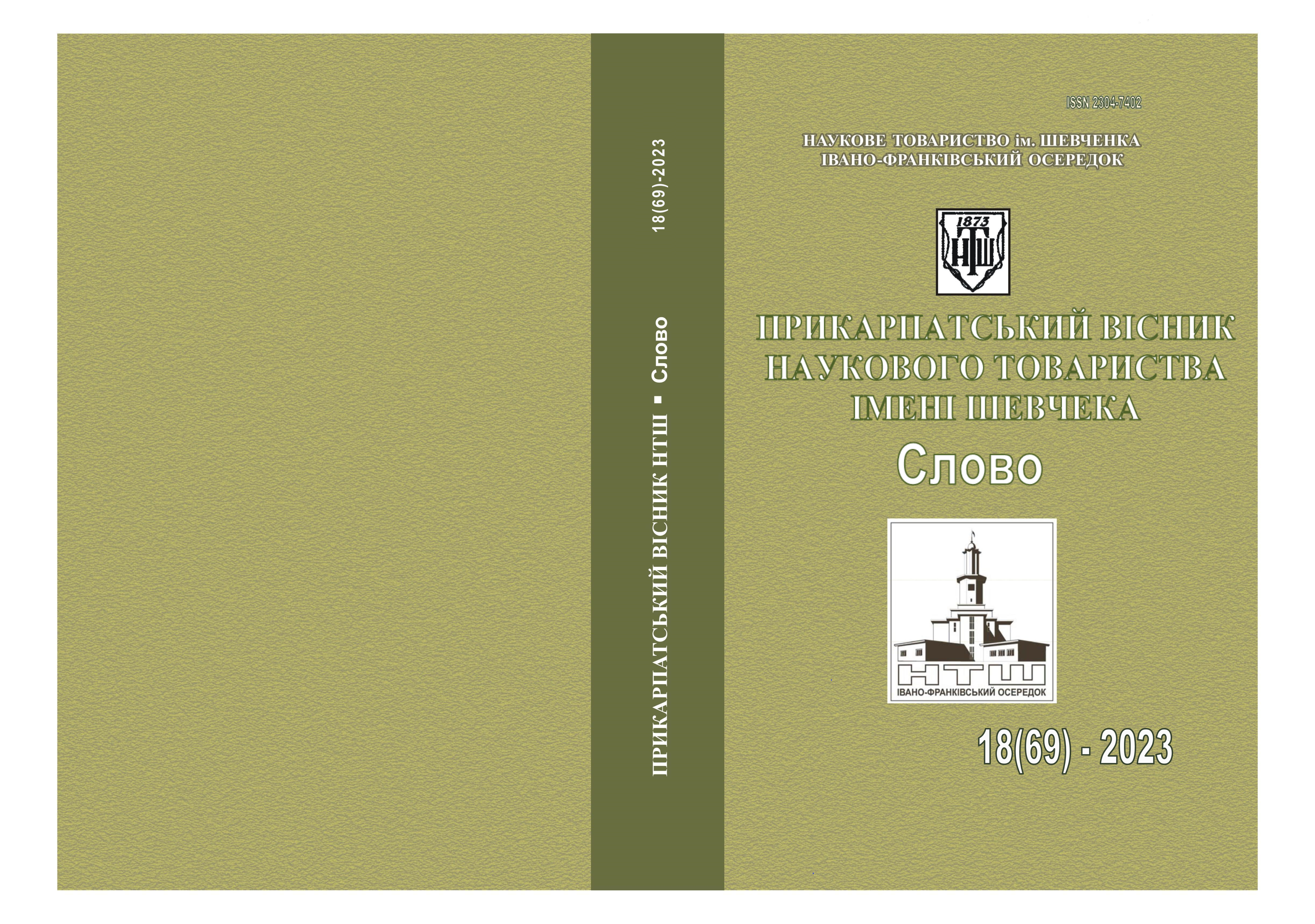THE TRAGEDY OF WORLD WAR I IN MARK CHEREMSHYNA'S SHORT STORY «THE VILLAGE BENDS»
DOI:
https://doi.org/10.31471/2304-7402-2023-18(69)-98-107Keywords:
антимілітарна тематика, мікропоетика, новела, об’єктивізм, натуралізм, експресіонізм, імпресіонізм, модернізм.Abstract
The article is dedicated to the study of artistic representation of anti-war themes in Mark Cheremshyna's short story "The Village Bends". Features of Mark Cheremshyna's individual writing style are explored, along with his ability to harmoniously combine the genre potential of the short story with the poetic possibilities of various literary movements.
The theoretical and methodological basis of the research are the works of scholars who studied the uniqueness of Mark Cheremshyna's individual writing style (I. Denysiuk, I. Stef'yuk), the genre potential of the short story (I. Denysiuk, M. Legky), and the poetic features of naturalism, expressionism, and impressionism (V. Matviyishyn, O. Chernenko, N. Shumylo). The research employs methods of hermeneutics (in interpreting the system of macro and micro images of the analyzed short story), cultural-historical approach (in clarifying the historical, social, ideological, moral-ethical context of the ideological-thematic content of the short story) and receptive aesthetics (in observing the suggestive influence of the work on the reader).
The research results demonstrate Mark Cheremshyna's considerable artistic skill in objectively depicting the tragedy of World War I, and his ability to combine the traditions of national literature with innovative trends in the global literary process of the late 19th - early 20th centuries. The scientific novelty of the article lies in the attempt to, for the first time, through the lens of analyzing the micropoetics of one work by Mark Cheremshyna, reveal not only the secrets of the author's poetic craftsmanship in describing anti-war themes, but also to explore the problem of enhancing the expressive possibilities of the short story thanks to the synthesis of its genre-compositional features with poetic elements of naturalism, expressionism, and impressionism.
References
Денисюк І. Літературознавчі та фольклористичні праці: У 3 томах, 4 книгах. Львів, 2005. Т. 1. Кн. 1. 432 с.
Денисюк І. Літературознавчі та фольклористичні праці: У 3 томах, 4 книгах. Львів, 2005. Т. 1. Кн. 2. 486 с.
Легкий М. Іван Франко і канон українського модернізму. [Спроба (де)канонізації] Франкознавчі студії Ред. кол. Є. Пшеничний (голов. ред.), А. Войтюк, В. Винницький та ін. Дрогобич: Вимір, 2001. Вип. 1. С. 83-93.
Марко Черемшина. Твори. К.: «Дніпро», 1978. 327 с.
Матвіїшин В. Західноєвропейська мала проза у творчій рецепції Марка Черемшини. Марко Черемшина у спогадах, документах і матеріалах. Чернівці: Друк. Арт, 2014. С. 323-332.
Стеф’юк І. Перша світова війна у творчості Марка Черемшини. Вісник Запорізького національного університету. Філологічні науки. №1, 2015. С. 268-276.
Черненко О. Експресіонізм у творчості Василя Стефаника. Едмонтон: “Сучасність”, 1989. 280 с.
Шумило Н. Проблема органічності українського літературного розвитку (проза кінця ХІХ – початку ХХ ст.) З його духа печаттю… Збірник наукових праць на пошану Івана Денисюка. Львів: Видавничий центр ЛНУ ім. Івана Франка, 2001. Т.1. С. 63-70.

